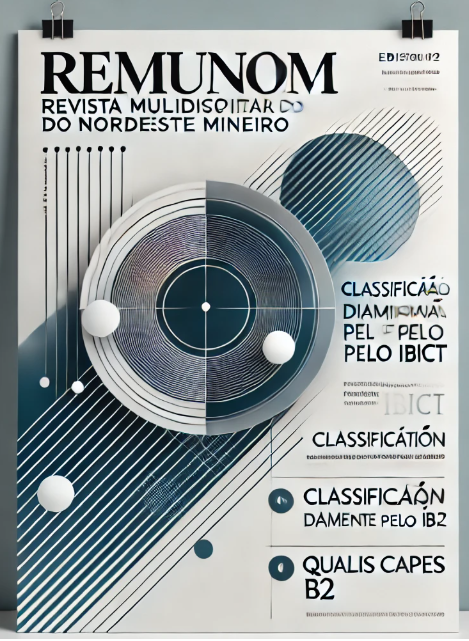THE RICHNESS OF MICROHABITAT HERPETOFAUNA IN A CAATINGA AREA
DOI:
https://doi.org/10.61164/rmnm.v12i1.4222Keywords:
Conservação; Riqueza de espécie; Monitoramento ambientalAbstract
The Caatinga is a biome characterized by semi-arid conditions and a diverse structure, harboring significant biodiversity with a high degree of endemism, containing factors that directly influence the composition of herpetofauna. Reptiles and amphibians perform essential ecological functions, acting as population controllers, seed dispersers, and environmental bioindicators, as well as acting as a fundamental link in food chains due to their sensitivity to microclimatic and structural changes in the habitat. However, the scarcity of studies on the use of microhabitats limits the understanding of their importance for the maintenance of biodiversity. This study aimed to investigate the species richness of herpetofauna associated with different microhabitats in the Camonga Mountains, in Santana do Ipanema (AL). Sampling was carried out between March and August 2025, covering dry and rainy periods, through active visual search, pitfall traps, and escape interception. Five main microhabitats were characterized: between rocks, under logs, dense shrubbery, exposed sandy soil, and accumulated leaf litter. In total, 20 species were recorded, including 8 amphibians and 12 reptiles, distributed among families such as Hylidae, Leptodactylidae, and Tropiduridae. The results indicate that the structural heterogeneity of the area supports specialists and generalists, reinforcing the relevance of Serra da Camonga as a refuge for regional biodiversity
References
ALBUQUERQUE, U. P. et al. Caatinga revisited: Ecology and conservation of an important seasonal dry forest. Brazilian Journal of Biology, São Carlos, v. 72, n. 3, p. 623-635, 2012. DOI: 10.1590/S1519-69842012000400002.
ANDRADE, G. V.; et al. Microhabitat use by lizards in the Caatinga of northeastern Brazil. Journal of Herpetology, v. 47, n. 4, p. 566-574, 2013.
ARAÚJO, C. L. de O.; NICOLI, J. S. Uma revisão bibliográfica das principais demências que acometem a população brasileira. Revista Kairós: Gerontologia, v. 13, n. 1, 2010.
BAGNE, B. M; GASPARINO, R. C. Qualidade de vida do cuidador do portador de Doença de Alzheimer. Revista de Enfermagem UERJ, v. 22, n. 2, p. 258-263, mar./abr. 2014.
BRASIL. Constituição da República Federativa do Brasil de 1988. Brasília, 5 de outubro de 1988. Disponível em: http://www.planalto.gov.br/ccivil_03/constituicao/constituicaocompilado.htm.
BRASIL. Decreto nº 6.800, de 18 de março de 2009. Dá nova redação ao art. 2º do Decreto nº 1.948, de 3 de julho de 1996, que regulamenta a Lei nº 8.842, de 4 de janeiro de 1994, que dispõe sobre a Política Nacional do Idoso, e dá outras providências. Brasília, 2009.
CACCIALI, P.; et al. Natural history of Oxybelis aeneus in South America: habitat use, diet, and reproduction. Herpetological Journal, v. 34, n. 1, p. 27-36, 2024.
COLWELL, R. K.; CODDINGTON, J. A. Estimating terrestrial biodiversity through extrapolation. Philosophical Transactions of the Royal Society of London. Series B: Biological Sciences, v. 345, n. 1311, p. 101-118, 1994.
GARDA, A. A.; et al. Herpetofauna of protected areas in the Caatinga III: Raso da Catarina Ecological Station, Bahia State, Brazil. Check List, v. 9, n. 2, p. 405-414, 2013.
GOMES, V. G. N. et al. Frugivory and seed dispersal of Cereus jamacaru DC. (Cactaceae) in the Caatinga, Brazil. Brazilian Journal of Biology, São Carlos, v. 74, n. 3, p. 560-568, 2014. DOI: 10.1590/bjb.2014.0081.
GUERRA, T. J.; PESSOA, L. M.; RODRIGUES, F. A. Seed predation and dispersal by granivorous birds in a tropical dry forest. Acta Oecologica, Paris, v. 85, p. 69-75, 2017. DOI: 10.1016/j.actao.2017.10.003.
HULME, P. E.; BENKMAN, C. W. Granivory. In: CRAWLEY, M. J. (ed.). Plant ecology. 2. ed. Oxford: Blackwell Science, 1998. p. 132-154.
LIMA, M. G.; ROCHA, P. A.; SOUZA, A. P. Bird assemblages and habitat use in a Caatinga mountain range, Brazil. Ornithology Research, Cham, v. 28, n. 2, p. 225-238, 2020. DOI: 10.1007/s43388-020-00014-5.
MARTINS, M.; MARQUES, O. A. V.; SAZIMA, I. Ecological and phylogenetic correlates of feeding habits in Neotropical pitvipers of the genus Bothrops. In: SCHUETT, G. W.; HÖGGREN, M.; DOUGLAS, M. E.; GREENE, H. W. (ed.). Biology of the vipers. Eagle Mountain Publishing, 2002. p. 307-328.
MAZZILLI, H. N. A defesa dos interesses difusos em juízo: meio ambiente, consumidor e outros interesses difusos e coletivos. 8. ed. São Paulo: Saraiva, 1997.
MINAYO, M. C. O avesso do respeito à experiência e à sabedoria. 2. ed. Brasília: SEDH, 2005.
PEDROSA, I. M. M. C.; et al. Herpetofauna of protected areas in the Caatinga II: Catimbau National Park, Pernambuco State, Brazil. Biota Neotropica, v. 14, n. 3, p. 1-13, 2014.
PELEGRIN, N.; et al. Effects of habitat structure and environmental variables on lizard assemblages in a Caatinga landscape. South American Journal of Herpetology, v. 12, n. 3, p. 212-222, 2017.
PIANKA, E. R.; VITT, L. J. Lizards: Windows to the evolution of diversity. Berkeley: University of California Press, 2003.
ROCHA, C. F. D.; et al. The endemic and threatened herpetofauna of the Brazilian Atlantic Forest. Brazilian Journal of Biology, v. 71, n. 1, p. 135-142, 2011.
RODRIGUES, M. T. Herpetofauna da Caatinga. In: LEAL, I. R.; TABARELLI, M.; SILVA, J. M. C. (org.). Ecologia e conservação da Caatinga. Recife: Editora Universitária da UFPE, 2003. p. 181-236.
SCHOENER, T. W. Resource partitioning in ecological communities. Science, v. 185, n. 4145, p. 27-39, 1974.
SOUZA-OLIVEIRA, A. F.; et al. Landscape and microhabitat structure dictate lizard diversity in semi-arid Caatinga. Journal of Tropical Ecology, v. 41, p. 45-56, 2025.
VIEIRA, G. H. C.; et al. Ecology and conservation of the boa constrictor (Boa constrictor) in the Caatinga biome. Herpetological Conservation and Biology, v. 15, n. 2, p. 345-356, 2020.
VITT, L. J.; CALDWELL, J. P. Herpetology: An introductory biology of amphibians and reptiles. 4. ed. San Diego: Academic Press, 2014.
Downloads
Published
Issue
Section
License
Copyright (c) 2025 Revista Multidisciplinar do Nordeste Mineiro

This work is licensed under a Creative Commons Attribution-NonCommercial-ShareAlike 4.0 International License.






